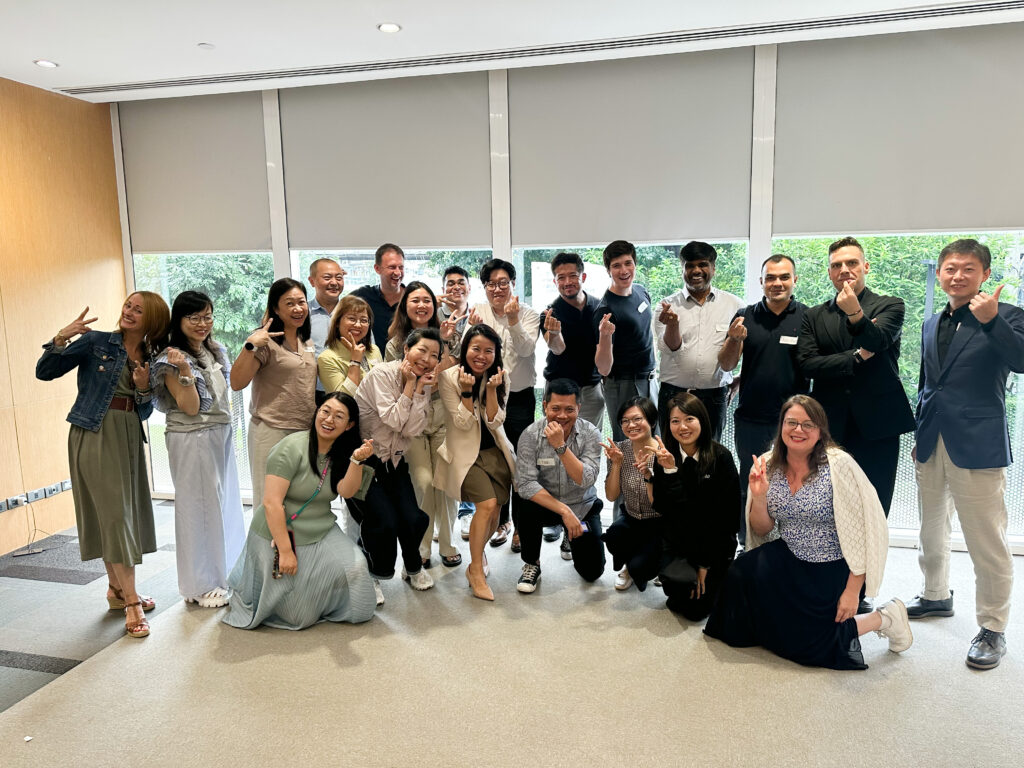Leading Large Scale Culture
Culture Change: Whose Job Is It, Really?
I’ve just returned from working with a brilliant APAC leadership group in Bangkok. They’re part of a global business navigating a big question: how do we turn culture aspirations from corporate head office into meaningful action across regions and teams spread around the world?
This Bangkok workshop was one of a series of regional workshops I’ve delivered across Europe and the USA in which company culture plans have been translated into regional culture plans and individual change actions.
In the workshop, one participant (let’s call him Barry) put up his hand and asked – with all these plans being made, who owns what? Who is really responsible, and how do we keep track?”
Good question Barry!
Here’s what I shared with Barry – and what I’ll share with you, if you’re wondering the same thing.
Culture change doesn’t live in a document.
It lives in people.
It lives in leaders.
Not just the CEO. Not just the People & Culture team. Not just the regional Heads. You. Me. All of us. And the impact we can have depends on the level we lead.
Let me explain.
Culture shift needs leadership at every level.
In global businesses, culture change isn’t top-down or bottom-up. It’s both. It’s sideways, cross border, and within.
I like to think about it like this. Culture surveys are often able to be broken down to be viewed at the global, regional, department and team level. That means, culture action also needs to be taken at each level. This means the work to be done to change culture can be ‘divvid up’ and shared across the different levels.
- Global-culture actions set the tone:
Overseen by the executive with company-wide initiatives like the annual culture survey, global training initiatives, global town halls, and strategy sessions. - Regional-culture actions bring culture to life:
Overseen by regional leaders through regional gatherings to educate and foster local collaboration, belonging and cultural reinforcement. - Team-Level culture actions is where the change happens:
The most impactful work happens here – leaders making culture change through everyday conversations, decisions, and actions. - Individual culture actions is how we each take accountability for change:
Every person contributes to a positive and productive workplace by being accountable to personal and professional achievement, supporting their teammates and sharing their ideas in service to better customer outcomes.
Culture plans matter – but they are the starting line, not the finish. The real shift happens in the daily conversations, decisions and micro-moments shared between people.
Five leaders. Five stories. One truth.
During one of these regional culture sessions, leaders shared how they’re making culture personal:
- One is creating space for honest, solution-focused conversations – instead of polite silence.
- Another is using a monthly newsletter to spotlight progress, foster cross-team visibility and spark connection.
- A third is doubling down on role clarity and recognition – ensuring people feel seen and valued.
- One is championing internal customer service – bringing teams together around shared goals.
- Another is inviting team ownership – giving people real input into how things like bonuses and development are decided.
What struck me wasn’t just the variety of actions. It was the ownership. These leaders aren’t waiting for permission and they’re not pretending that a document is going to make the difference. They are making change happen in ways that is relevant and meaningful for the teams they lead.
So, whose job is it?
If you’ve been handed a culture plan and you’re waiting for something to “happen” – I’ve got news.
You’re it.
You’re the something.
The more senior you are, the more your actions ripple. Global and regional culture plans are about changing the systems and structures that influence how people work. Team and individual plans are about behavioural action. But whatever your title, you have influence. Culture is created (and recreated) every day – in meetings, emails, decisions and moments of courage.
Your plan is your commitment.
Your actions are your impact.
So ask yourself: Am I leading myself? My team? My region? My company?
And then ask: What does that mean I need to do, today?
Because culture change isn’t a task.
It’s a responsibility.
And it starts with you.

